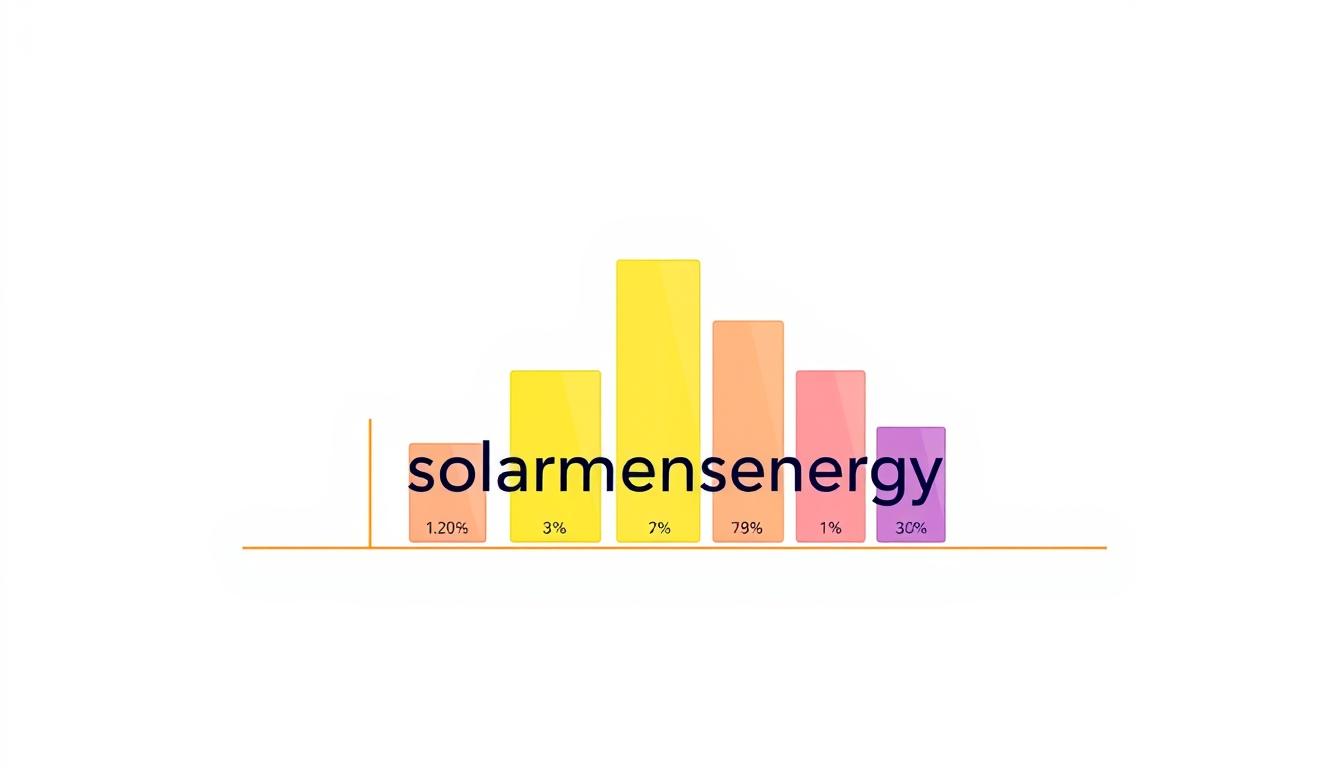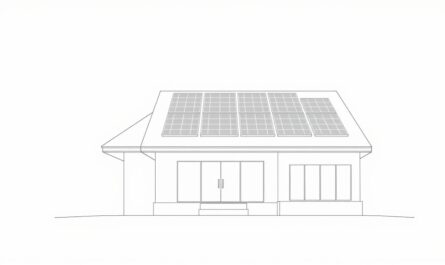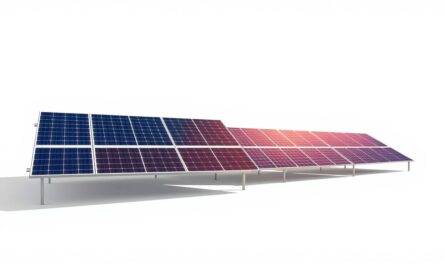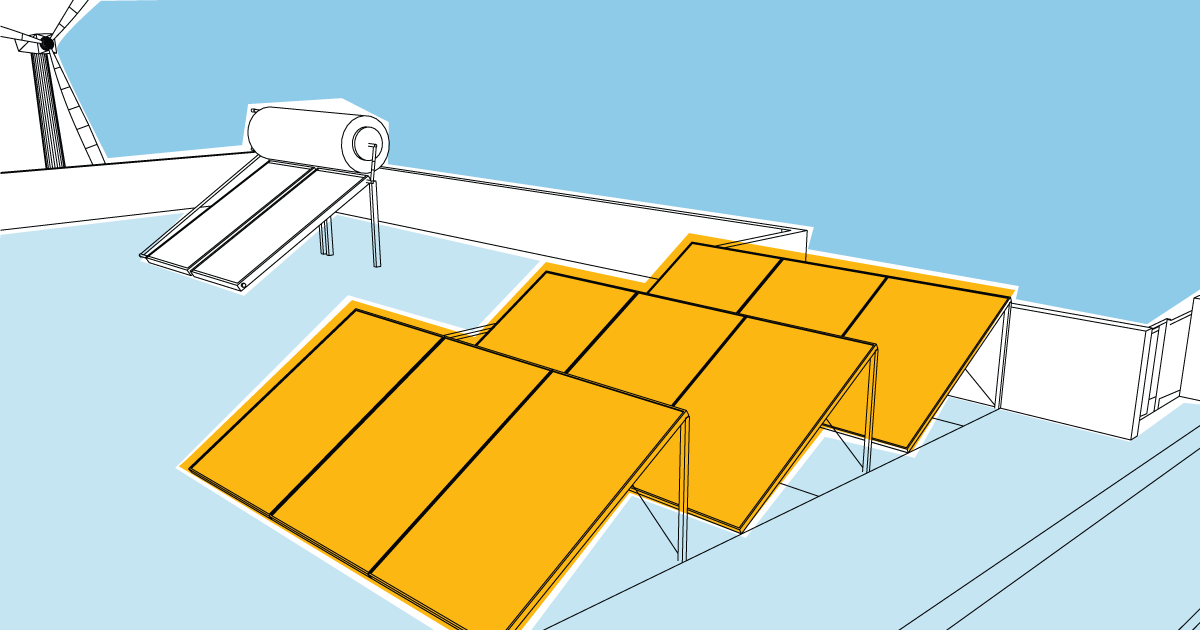Solar panel efficiency has grown from about 15% to over 20% in recent years. New technologies like perovskite materials could even reach 40%. It’s key to grasp solar panel efficiency ratings and guides. What does the future hold for solar panel efficiency? How can you choose the right solar panels for your home or business?
Thank you for reading this post, don't forget to subscribe!Table of Contents
Key Takeaways
- Solar panel efficiency has increased from approximately 15% to over 20% in recent years.
- Emerging technologies, such as perovskite materials, have the potential to boost solar panel efficiency to 40%.
- Understanding solar panel efficiency ratings is crucial for making informed decisions when choosing solar panels.
- The solar panel efficiency guide can help you navigate the different types of solar panels and their efficiencies.
- Solar panel efficiency ratings explained can help you understand the importance of efficiency in solar panel performance.
- Average solar panel efficiency in 2024 is 21.4%, a 10% increase in electricity produced per panel compared to 2019.
- The most efficient solar panels available for homes have an efficiency of 22.8%, such as those offered by SunPower.
What Are Solar Panel Efficiency Ratings?
Solar panel efficiency ratings show how well a panel turns sunlight into electricity. The top home solar panels today can turn about 23% of sunlight into electricity. This makes them very efficient.
Efficiency ratings are key to a solar panel’s performance. Panels with higher ratings can turn more sunlight into electricity. This means they can produce more power than less efficient panels, even if they’re the same size.
Top brands like SunPower offer panels with ratings up to 22.8%. Panasonic’s EverVolt series also has high ratings, at 22.2%. Choosing panels with high efficiency ratings is important for getting the most out of your investment. Knowing how to read these ratings helps you pick the best panels for your needs.
The Basics of Solar Energy Conversion
Solar panels turn sunlight into electricity with photovoltaic cells. Knowing how solar energy works is key to making solar panels more efficient. When comparing solar panels, look at the photovoltaic cells used and their impact on efficiency.
To boost solar panel efficiency, understand how they work and the role of photovoltaic cells. Choosing the right solar panel and installing it correctly can help save on energy costs.
How Solar Panels Work
Solar panels have many photovoltaic cells that turn sunlight into electricity. The efficiency of these cells depends on the material and manufacturing. When picking solar panels, compare their efficiency to meet your energy needs.
The Role of Photovoltaic Cells
Photovoltaic cells are key in converting sunlight to electricity. Their efficiency can be affected by temperature, shading, and maintenance. Knowing how to optimize these cells can help you save on energy costs.
Factors Affecting Solar Panel Efficiency
Solar panel efficiency is affected by many things. These include the material used, the weather, and how the panels are installed. Knowing these solar panel efficiency factors helps improve how well panels work. For example, Jackery’s high-quality panels have a 25% conversion rate, the best in the world.
The material used in solar panels is very important. It affects how well the panels turn sunlight into electricity. Weather and temperature also play a big role. Extreme weather and high temperatures can lower efficiency. The angle at which panels are installed also matters, as it affects sunlight exposure.
Important factors to think about when looking at solar panel efficiency factors are:
- Material quality and type
- Temperature and weather conditions
- Angle of installation
By understanding these factors and working toimprove solar panel efficiency, we can get more energy. This helps both individuals and businesses, and it’s good for the environment too.
Common Solar Panel Types and Their Efficiencies
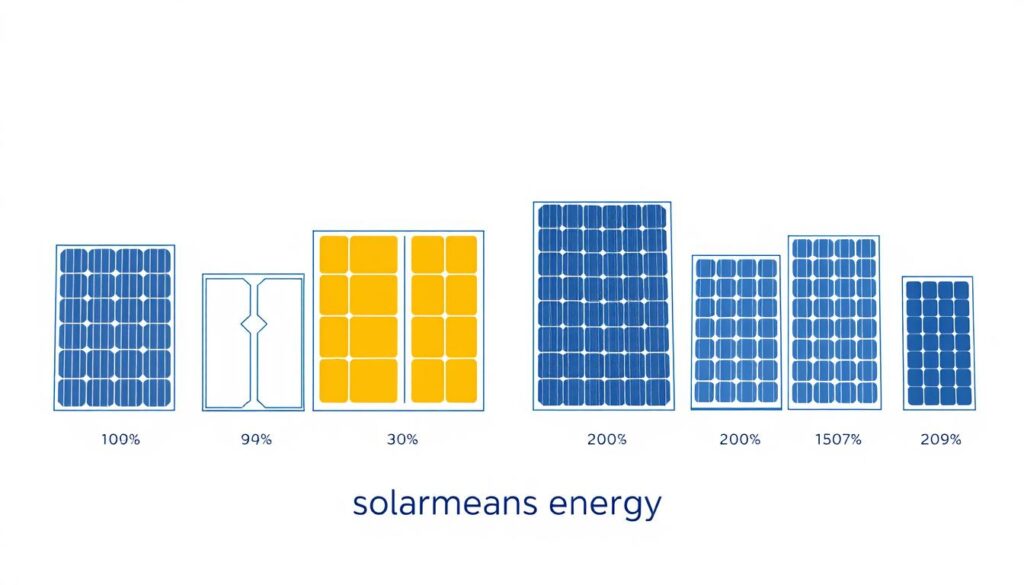
Understanding solar panel efficiency is key. Knowing the different types of solar panels helps you make the right choice. A solar panel efficiency guide can guide you through the options.
Many factors affect solar panel efficiency. These include the material used, how they’re made, and where they’re used. It’s important to consider these when looking at efficiency ratings.
Monocrystalline Panels
Monocrystalline panels are very efficient, with some reaching up to 22.8%. They’re made from a single crystal of silicon. This makes them the most efficient type.
Polycrystalline Panels
Polycrystalline panels have an efficiency of 15-17%. They’re made from multiple silicon crystals. They’re also less expensive to make than monocrystalline panels.
Thin-Film Panels
Thin-film panels have an efficiency of 13-15%. They’re made from a thin layer of photovoltaic material. They’re cheaper to produce than crystalline silicon panels.
Here’s a quick look at the different solar panel types and their efficiencies:
- Monocrystalline panels: 20-22.8% efficient
- Polycrystalline panels: 15-17% efficient
- Thin-film panels: 13-15% efficient
How Efficiency Ratings Are Measured
To grasp how solar panel efficiency ratings are measured, it’s key to understand standard testing conditions (STC) and what impacts efficiency. The rating is found by dividing the panel’s maximum power at STC by its area in meters. This method lets people compare different panels and pick the best for their needs.
When looking at solar panel efficiency ratings, keep these points in mind:
- Material quality and type: High-quality materials can boost efficiency ratings.
- Temperature and weather conditions: Extreme weather can change efficiency.
- Angle of installation: The best roof angle for panels is between 30 to 40 degrees.
Standard Testing Conditions (STC)
STC is a test standard for solar panel efficiency under controlled conditions. It considers temperature, irradiance, and spectral distribution. This ensures panels meet standards and gives accurate ratings.
PTC Ratings Explained
PTC (Photovoltaic Technology Committee) ratings offer a more realistic view of solar panel efficiency in real life. They account for temperature, wind, and spectral distribution, which can impact performance. PTC ratings help consumers understand how panels will work in their environment, aiding in choosing the right ones.
The Impact of Efficiency on Cost
When looking at the cost of solar panels, it’s key to think about efficiency’s role. A comparison of solar panel efficiency can show which ones are the best value. By improving solar panel efficiency, you can save money in the long run and get a better return on investment (ROI).
High-efficiency solar panels can cut down the initial cost. This is because they use less energy and pay off faster. For example, monocrystalline panels are 20% to 23% efficient, making 300 to 550 watts of power. On the other hand, polycrystalline panels are 15% to 17% efficient, making 300 to 400 watts.
When evaluating solar panel costs, consider a few things:
* The type of solar panel, like monocrystalline, polycrystalline, or thin film
* The panel’s efficiency rating
* The power it produces in watts
* The cost per watt of the panel
By looking at these factors and aiming for better solar panel efficiency, you can make smart choices. This way, you can get the most out of your solar panel investment and increase your ROI.
Real-World Performance: What to Expect
Many things affect how well solar panels work, like the panel type, where they’re installed, and the weather. Knowing these factors helps improve solar panel efficiency and get more energy. In real life, solar panels usually make less energy than they’re rated for. This is because of changes in temperature and sunlight.
Different brands have varying efficiency ratings, from 15% to 24%. For example, monocrystalline panels can be 15% to 22% efficient. Polycrystalline panels are 15% to 20% efficient. Here’s a quick look at efficiency ranges for different panels:
- Monocrystalline solar panels: 15% to 22%
- Polycrystalline solar panels: 15% to 20%
- Thin-film solar panels: 10% to 20%
It’s also important to think about how efficiency can drop over time. Things like temperature, humidity, and UV rays can cause this. By understanding these factors and working to improve efficiency, you can get the most energy from your solar panels.
Comparing Efficiency Ratings of Leading Brands
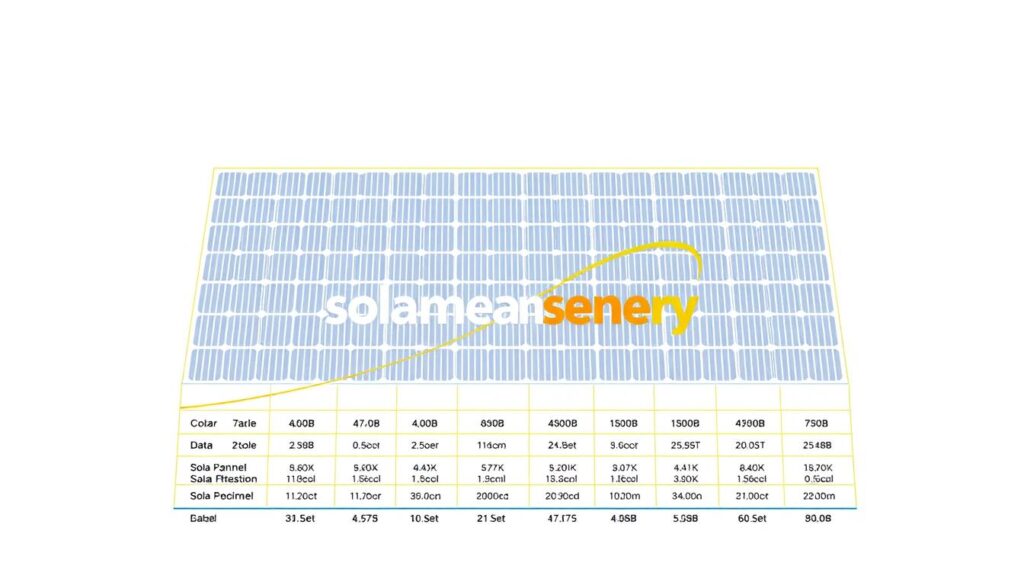
Many top brands are known for their high-efficiency solar panels. A solar panel efficiency guide helps you see what’s out there. Let’s look at how SunPower, LG Solar, and Canadian Solar compare.
SunPower leads with solar panels up to 22.8% efficient. This is way above the usual 19% to 21% for home panels. Knowing the solar panel efficiency ratings explained by makers is key to choosing wisely.
Here are some efficiency ratings for leading brands:
- SunPower: up to 22.8%
- LG Solar: up to 22.0%
- Canadian Solar: up to 22.0%
High-efficiency panels can boost your solar system’s value. But, they might cost more. Grasping the solar panel efficiency guide helps in making smart solar investments.
Debunking Myths About Solar Panel Efficiency
There are many myths about solar panel efficiency that can confuse people. One myth is that higher efficiency always means better performance. But, this isn’t always true. To understand solar panel efficiency ratings, you need to look at other things like cost and how long they last.
Another myth is that only high-efficiency panels are worth it. While they can give more power, they cost more. To find the best solar panel efficiency ratings for you, think about how much energy you need and your budget. Here are some things to think about:
- Energy needs: Calculate your daily energy use to figure out how big your panels need to be.
- Budget: Think about the cost of the panels, putting them up, and keeping them running.
- Space: Check how much room you have for the panels.
By thinking about these things and learning how to understand solar panel efficiency ratings, you can make a smart choice. You’ll find the best solar panel efficiency ratings for your needs.
Tips for Choosing Efficient Solar Panels
When picking solar panels, think about a few key things for the best results. Knowing your energy needs and checking ratings from the makers are important. This helps you pick the right solar panels for you.
A solar panel efficiency comparison can show you the top choices. Look at the panel type, how well it converts sunlight, and how it does in different weather.
Evaluating Your Energy Needs
To figure out your energy needs, consider a few things:
- Energy use: Work out your average energy use to know how big your solar panel system needs to be.
- Roof size and space: Check if your roof can hold the solar panels you need.
- Local climate and weather: Pick solar panels that work well in your area’s weather.
Checking Manufacturer Ratings
It’s also key to check the ratings of the makers. Look for high-quality panels with great efficiency ratings. Also, check for certifications like those from the International Electrotechnical Commission (IEC) to make sure they meet global standards.
By using these tips and focusing on optimizing solar panel efficiency, you can pick the best solar panels for your needs.
Future Trends in Solar Panel Efficiency
The demand for clean energy is rising fast. This is pushing the solar panel industry to get better and better. They’re looking at new ways to make panels work more efficiently. This includes using new materials and designs, like perovskite solar cells, to boost performance and cut costs.
New trends in solar panels include bifacial panels that catch energy from both sides. There are also transparent panels for windows and buildings. Plus, better energy storage systems, like lithium-ion and solid-state batteries, will help keep extra energy for later use.
Other exciting trends are solar fabrics for clothes and buildings, and smaller energy systems for homes and communities. These changes will help the solar panel industry grow. They’ll also make our energy future greener and more sustainable.
- Perovskite solar cells offer high efficiency at a lower cost than traditional silicon-based panels
- Bifacial solar panels can increase energy production by up to 25%
- Transparent solar panels can be integrated into building materials, such as windows and facades
Conclusion: Making Informed Decisions
As we wrap up our look atsolar panel efficiency ratings, it’s clear they’re key to picking the right solar panels. Thesolar panel efficiency guidewe’ve shared has highlighted what affects efficiency. This includes material quality, environmental conditions, and new tech on the horizon.
You now know about the efficiency ranges for different solar panels. You also understand the role of STC and PTC ratings. Plus, how efficiency affects your energy savings and investment return. Remember, higher efficiency doesn’t always mean better performance. It’s about finding the right balance for your energy needs.
Choosing to go solar is a big step, and now you’re ready to make a smart choice. You can use the knowledge you’ve gained to pick a solar solution that fits your goals and budget. Talk to trusted solar providers, think about your energy needs, and consider panel placement and upkeep for the best efficiency and value. The future of solar is bright, and with the right info, you can use its power for your home or business.


